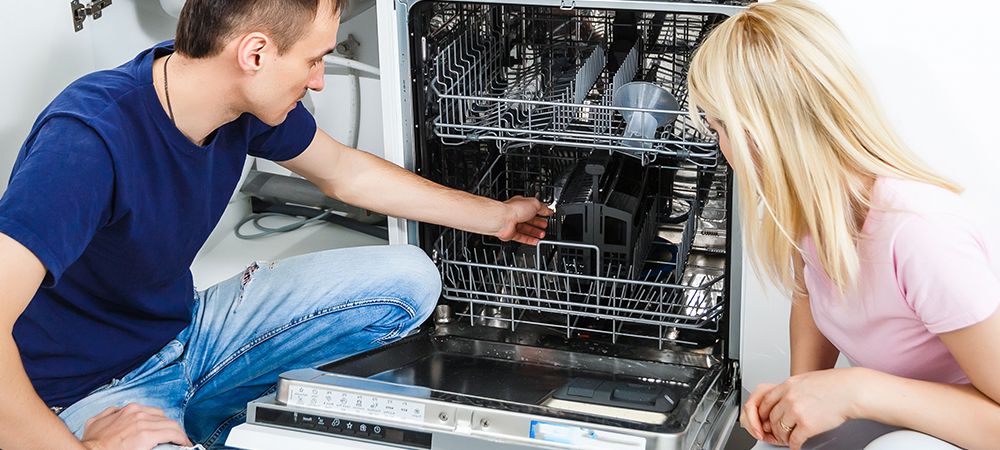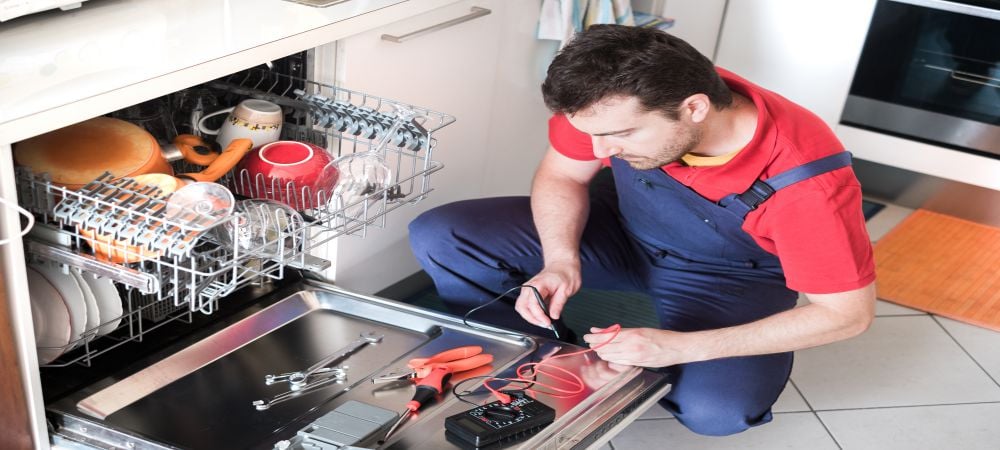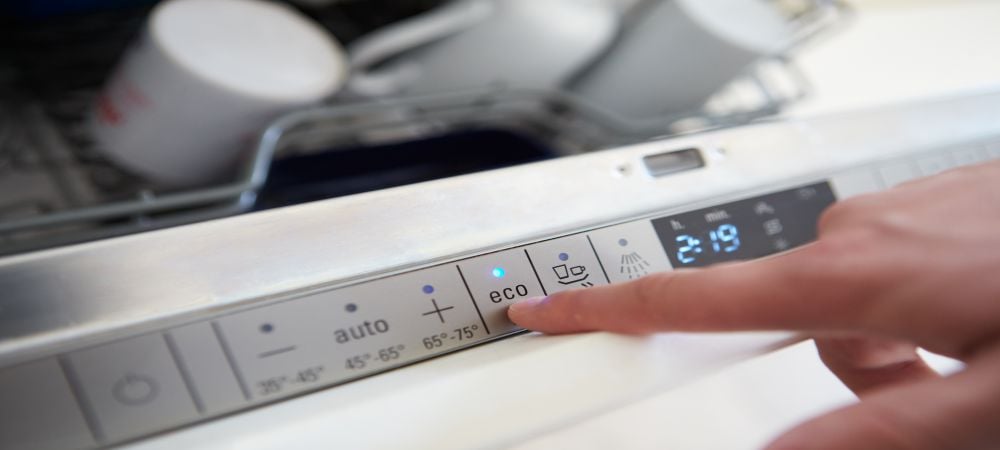Through the years, dishwashers have established themselves as a central element of Canadian households, which shouldn’t come as a surprise. After all, they are incredibly easy and convenient to use, making your life a hundred times easier. This, in turn, allows you to focus on more important aspects of your home and your day-to-day responsibilities.
Using a dishwasher is a no-brainer. All you have to do is load your unit with the dirty dishware and cutlery. With this nifty appliance, you don’t have to spend precious time washing them by hand.
Over time, however, your dishwasher may also begin acting up – just like any other household appliance. One of the most common problems is when they won’t start even after you have pressed the power button. Before calling a repair technician, you may want to try diagnosing the issue yourself first. Here is how to do it.
4 Reasons Why Your Dishwasher Won’t Start and the Solution
There are several reasons why your dishwasher refuses to start, but the most likely offenders include the door latch assembly, electric control timer, selector switch, and thermal fuse. When any of these components fail, it could prevent your dishwasher from starting.
Try These Steps before You Begin the Troubleshooting Process:
- Check If Your Dishwasher Is Plugged In. This might sound obvious, but sometimes the simplest thing is the easiest to forget. That is, sometimes the dishwasher won’t start simply because it has not been plugged in.
- Inspect Your Circuit Breaker. If your dishwasher is already plugged in but it still won’t work, there may be an issue with the circuit breaker. Head to your household breaker box and check if the switch is flipped to the wrong position. Alternatively, you may also notice some signs of overheating. If it is the latter, it is best to let an expert deal with the problem.
- Ensure That the Child Lock Setting Is Not Activated. Some dishwasher models come with a child lock button on the control panel. It is essentially a safety feature that prevents children from accidentally changing your appliance’s setting, especially during the wash cycle. It could also prevent your dishwasher from starting.
- Reset Your Dishwasher. Is your dishwasher not starting even though the lights are switched on? You might want to reset your appliance. All you have to do is unplug your appliance. Wait for a minute or so before plugging it back in and turning on the power. The exact steps may vary depending on your dishwasher’s model, so make sure to check the manufacturer’s instructions.
If none of these steps work, read on to figure out the culprit for your malfunctioning dishwasher, as well as the appropriate solution. Don’t forget to disconnect the appliance from the power source before getting started.
If you are unsure of how to proceed, it is always best to let an appliance repair professional handle the job. The last thing you want is to damage your dishwasher even further.
Another important thing to note is that many of the tests below will involve the use of a multimeter. With that said, make sure that it is properly calibrated before use.
Related article: What Is the Cost of Repairing a Dishwasher in Toronto?
I. Defective Door Latch Assembly
A common reason why your dishwasher won’t turn on is that there is something wrong with the door latch assembly, including the door latch switches. The door latch assembly is essentially in charge of keeping the dishwasher door closed while the cycle is ongoing, preventing the water from seeping out. It also contains the door latch switches, which are responsible for supplying power to your dishwasher’s controls.
If your appliance’s door won’t close properly or if the latch switches are broken, the dishwasher controls may not receive the power needed for your unit to start and function properly. In this case, the door latch assembly will have to be replaced.
How to test the door latch assembly:
- Make sure to unplug your appliance before getting started.
- Locate the door latch assembly. It is typically found on top of your dishwasher’s door. You will probably have to remove the inner door panel in order to access the assembly. If you are confused, refer to the owner’s manual on where to find the latch assembly.
- After locating the door latch assembly, confirm if it is properly activating the switches. You can do this by inserting the door catch into the assembly. If not, it is probably broken and needs to be replaced.
- If your dishwasher’s door latch switches are being operated mechanically, carefully remove them from the assembly.
- Test the switches for continuity using a multimeter. You should get a reading of zero or almost zero. If the screen displays a different reading, the door latch assembly is most likely broken, requiring a replacement.
Related article: 7 Reasons Your Dishwasher Is Leaking
II. Malfunctioning Electric Control or Timer
If the door latch assembly is not the guilty party, you might want to check the electric timer control. This component is linked to the control panel and decides the duration of the wash cycle. If the electric control has gone kaput, the timer won’t receive the power needed to start the cycle, which can prevent your appliance from turning on. The same goes if there is an improper connection between the timer and the control panel.
How to test the electric control:
- Unplug your dishwasher.
- Locate and remove the timer from your appliance. As previously mentioned, it is usually found in the control panel.
- If your timer has several contacts, make sure to refer to your model’s wiring diagram. This will give you an idea of which wires or contacts you have to test.
- Ready your multimeter by setting it to the Rx1000 setting. Connect to probes with the relevant contacts. Dishwasher timers typically measure anywhere from 2000 and 3500 ohms of resistance, although it may still vary from one make to another. Again, consult your owner’s manual to be sure.
- If the reading that you get falls outside of the recommended range, you will have to get a replacement electric control timer.
III. Selector Switch Not Working Properly
The selector switch, as the name indicates, enables you to select different options for every wash cycle, be it for washing, drying, or heating. Depending on the model and make, the switch might prevent your dishwasher from starting if it is defective. Another possible reason is that it is not fully depressed or two or more buttons have been pressed simultaneously.
How to test the selector switch:
- As always, remove your appliance from the power source.
- To access your start switch, you will have to take the dishwasher door apart, particularly the inner door panel. It is often found in the control panel.
- After locating the switch, ensure that it is correctly depressed. Otherwise, carefully pry it off from your appliance.
- Set the multimeter to the RX1 setting, then touch the probes to the appropriate wire terminals. Be extra patient during this step, especially since you will have to test the button one by one. For the first test, you should get a reading of infinity.
- For the second test, keep the probes on the terminals, then press the button connected to the terminal you are testing. This time, the display should show a reading of zero.
- Repeat both tests for the rest of the buttons.
- If any of the above tests fail, it indicates that the selector switch is faulty and needs to be replaced.
IV. Broken Thermal Fuse
The thermal fuse is your dishwasher’s safety component. Basically, it cuts off the power to the control panel when your appliance starts to overheat or if there is a short circuit in the wire. A tripped or blown thermal fuse can help stop the onset of fires, but it may also prevent your dishwasher from working properly. In this case, you have no choice but to replace your thermal fuse.
How to test the thermal fuse:
- Begin by disconnecting the dishwasher from the power supply. Remember, you will be working with electrical components.
- Carefully remove the inner door panel of your dishwasher to access the thermal fuse. It is typically connected to the control panel via two wires. Disconnect the wires and take the thermal fuse out so it can be tested for continuity.
- Set your multimeter to the RX1 setting, then position the probes to the fuse’s terminals. You should get a reading of zero or close to zero. If not, you need a thermal fuse replacement.
Fix Your Broken Dishwasher in No Time
Did you rigorously follow the instructions above, but still can’t diagnose your faulty dishwasher? Or, perhaps you have already successfully replaced the problematic parts, but your appliance still won’t start properly?
If you answered yes to any of these questions, it may be time to let experts handle the job. Here at Prime Appliance Repair, our team of highly skilled appliance repair specialists will have your broken appliance functioning in no time. Call us at 647-931-1114 to book your appliance repair!









